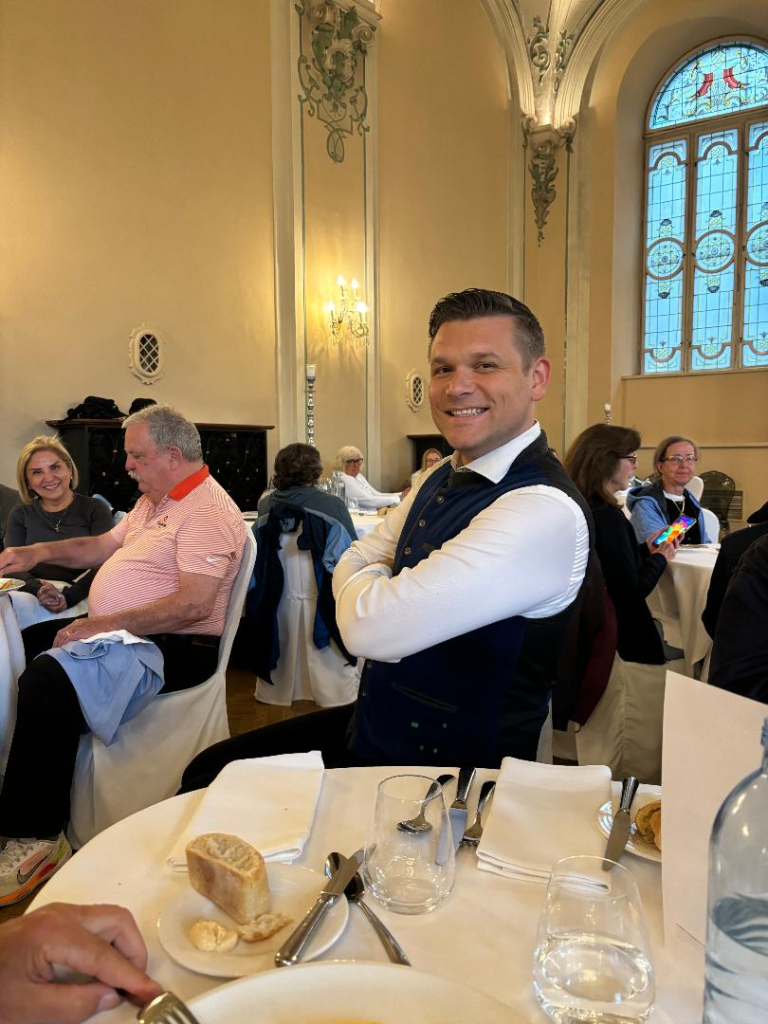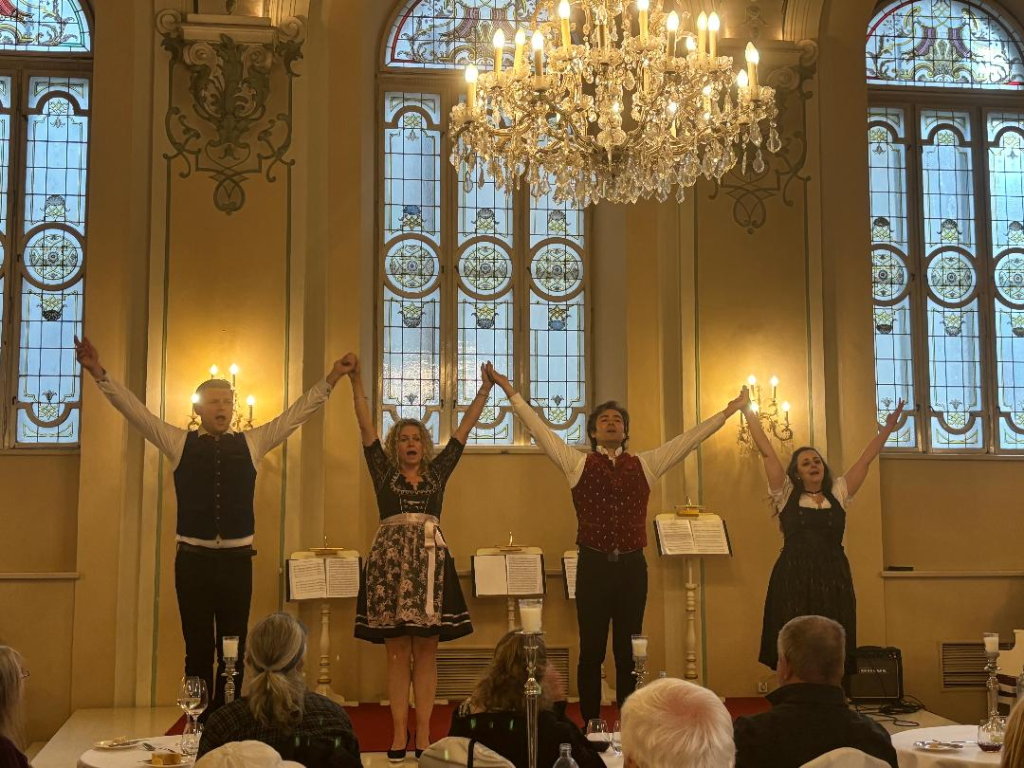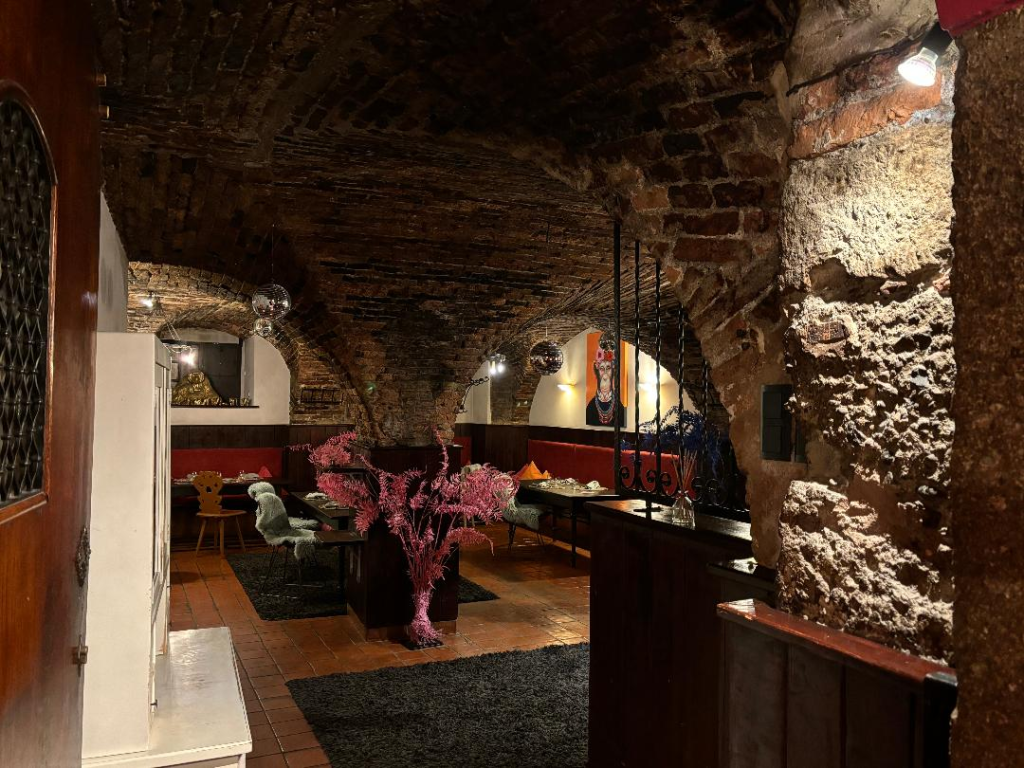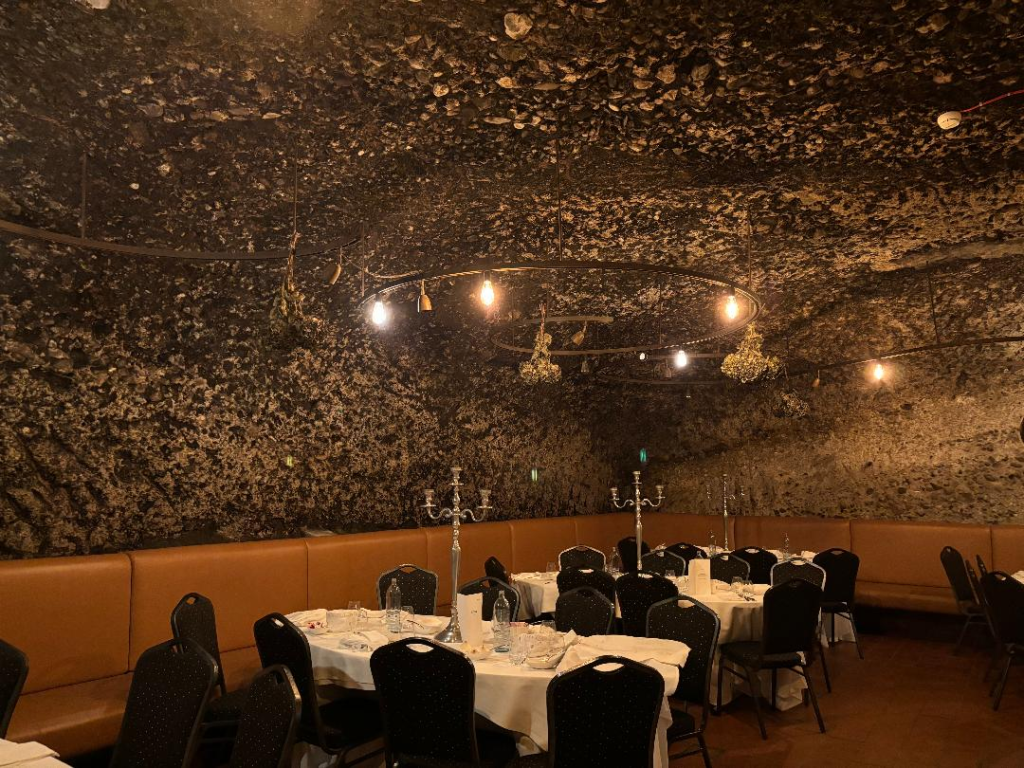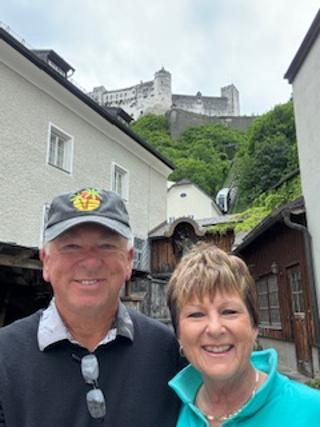May 17, 2024
What would America be without Salzburg, producer of our favorite flavor-enhancing mineral, filming location of the beloved American musical, “The Sound of Music,” and home to one gentleman who forever changed the world of music, and another who’s contributions to the world of science now make it possible to predict the weather?
Situated along the banks of the Salzach river, Salzburg’s name is derived from the barges that used to carry salt along the river – Salz = salt; burg = castle.
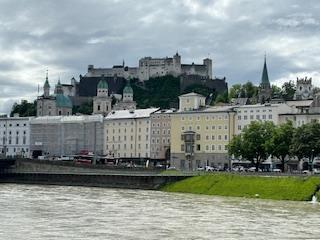
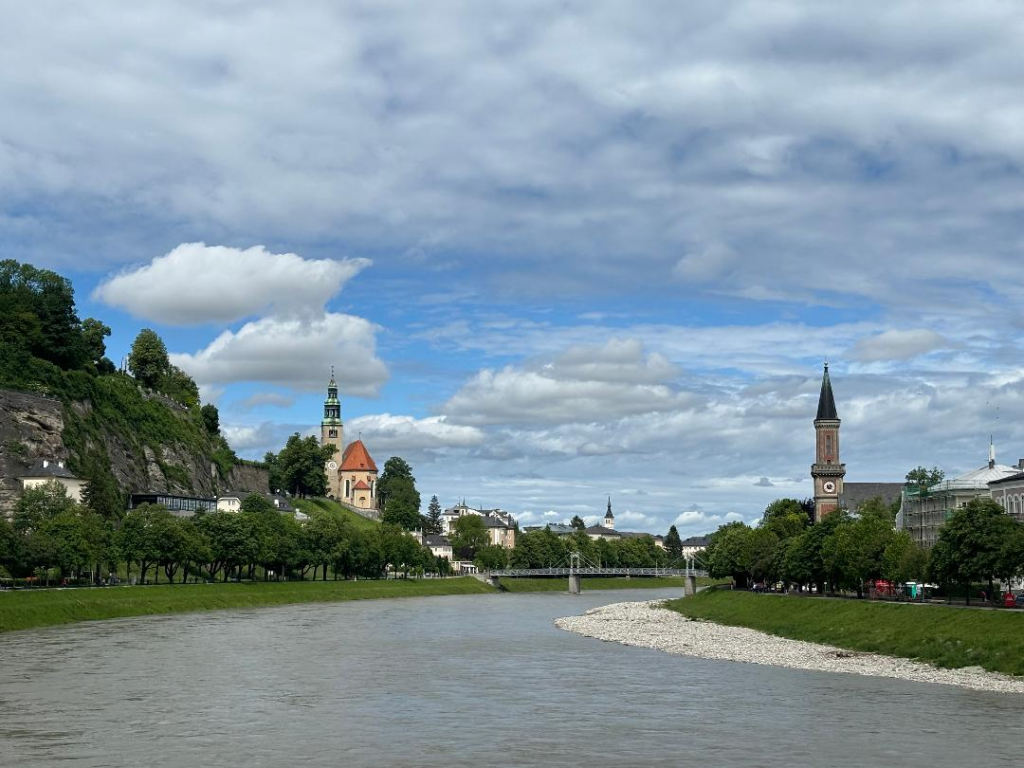
So long ago salt was considered so precious it was referred to as White Gold. Salzburg’s oldest mine, Hallein Salt Mine, has been continuously worked for more than 2600 years.
We began our tour at the Mirabell Gardens, built around 1606 by the Prince Archbishop. The palace was said to be “illegal” because it was built outside the city walls. As if that weren’t scandalous enough, it was built by the Prince Archbishop for his MISTRESS! A mistress with whom he had 17 (!!!) children. I guess it’s not the marital relations that are a no-no for the Archbishop; it’s legalizing those relations that’s the problem. To make the story all the better, she was the daughter of a pub owner.
These gardens provided the backdrop for the children singing “Do-Re-Mi” in the Sound of Music. They danced around the garden, and made their way up the steps in front of the rose garden, taking one step for each note.
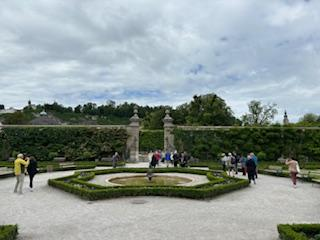

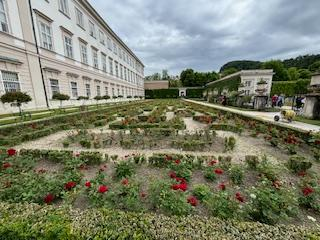
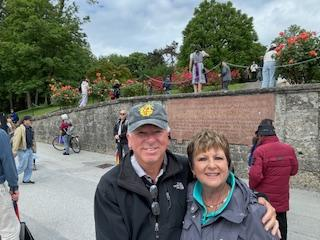
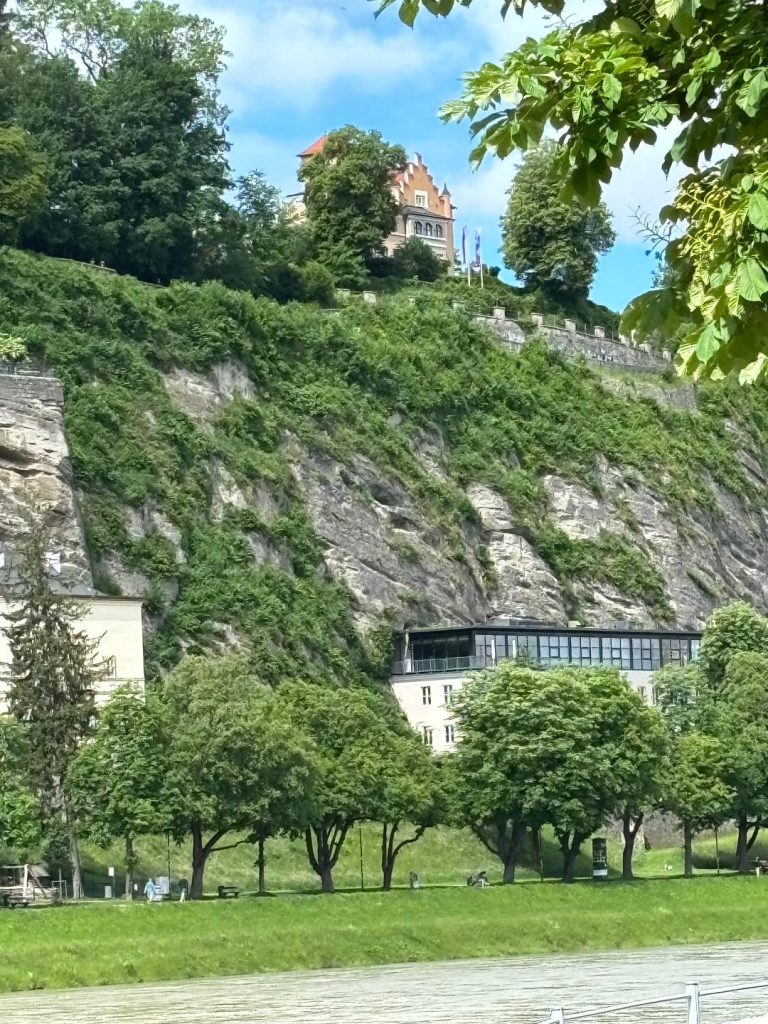
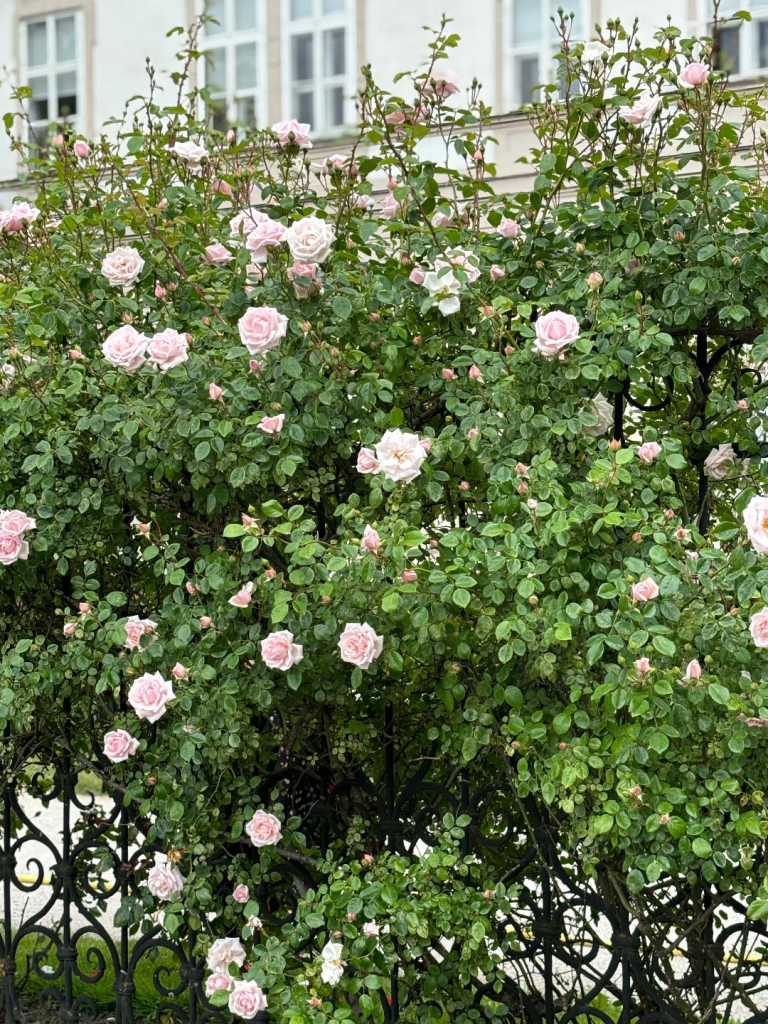
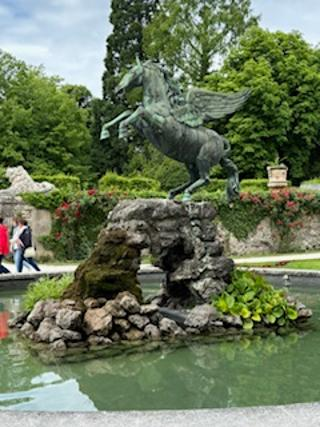
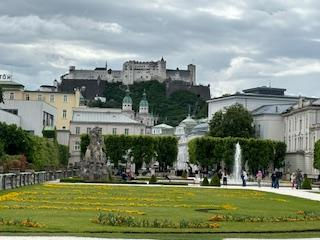
We’re told the Austrians were less than thrilled to have the Americans here filming the movie. They had not yet come to terms with their Nazi past, a central theme in the movie, and it seemed a bit contradictory for America to be making a movie about the inequities of war right when it was embroiled in its own questionable actions in Vietnam.
Young Mozart lived within a stone’s throw of the palace in his teen years and it is supposed he made many a visit while he was here. He was born across the river, in the center of town (shown in the photo on the left), one of seven children, only two of whom survived, but moved nearer to the palace when he was 17 (photo on the right). His family rented the bottom floor.
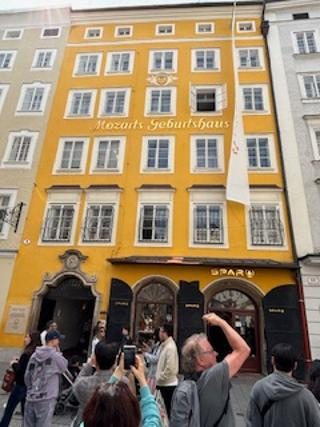
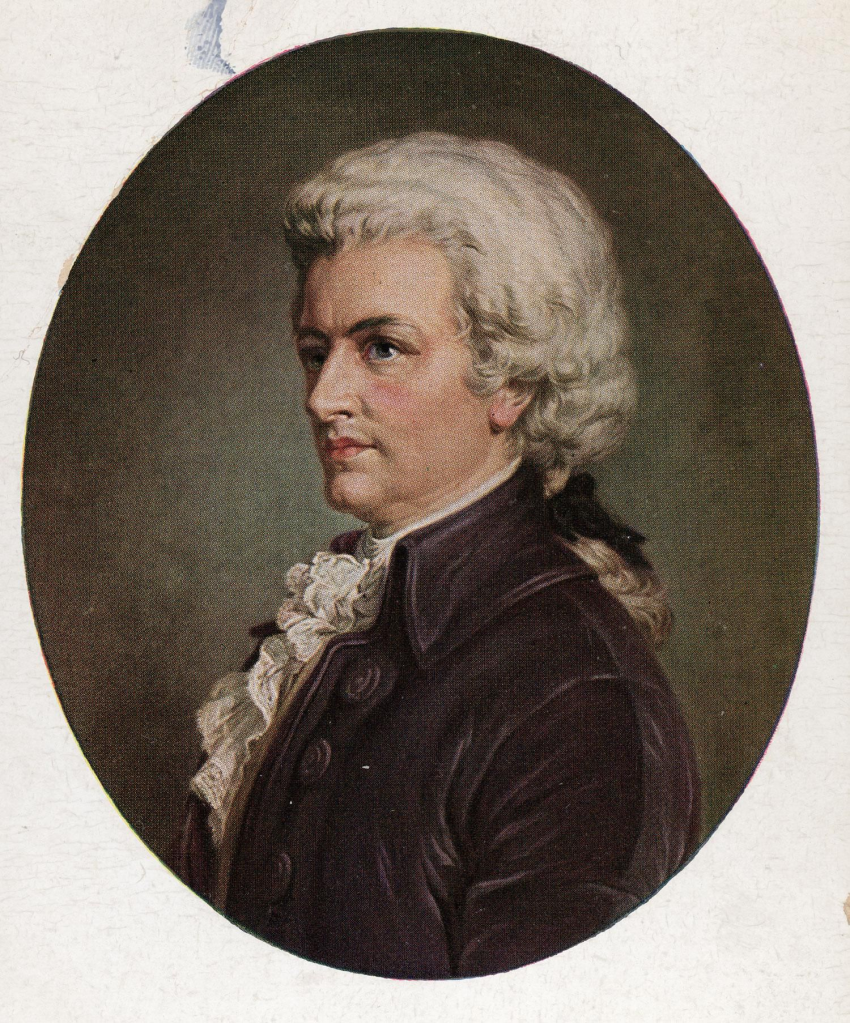
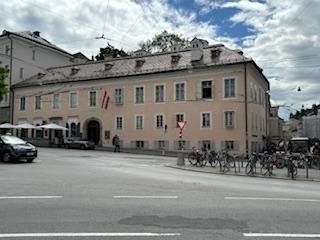
Ironic that Salzburg takes such pride in Mozart now. He was always viewed a genius, playing his first concert as a child prodigy at age 6, but he was run out of town because he was a bit of a music rebel. He didn’t follow the musical conventions of the time; our guide referred to him as the precursor to rock stars, experimenting with all types of compositions. He moved to Vienna where he died of rheumatic fever just shy of his 35th birthday. At the time of his death, he had composed more than 800 works of art representing nearly every western classical genre of his time.
Just down the hill from Mozart is the home of Christian Doppler, esteemed Austrian mathematician and physicist who identified something known as the Doppler Effect. Doppler was born about ten years after Mozart’s death. I won’t go into the details of what the Doppler Effect is, but I will tell you that its impact has been far-reaching and continues today. It has led to advancements in astronomy, radar systems, medical imaging, GPS and satellite communications, and current profilers, which measure water flow velocity in rivers, oceans and other bodies of water. Most of us are most familiar with it through the Doppler Radar readings cited every night on our local news.


Before crossing the bridge into town we stopped to admire the hotels that housed Christopher Plummer and Julie Andrews while they filmed the Sound of Music. Plummer and many of the other members of the cast stayed in the hotel on the left. Julie Andrews had just become a new mother, and she and her family stayed at the hotel on the right, where she has said she often felt ostracized from the rest of the gang.
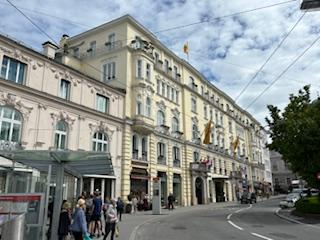
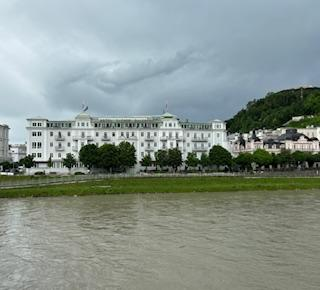
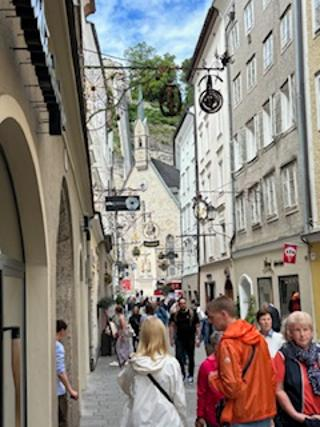
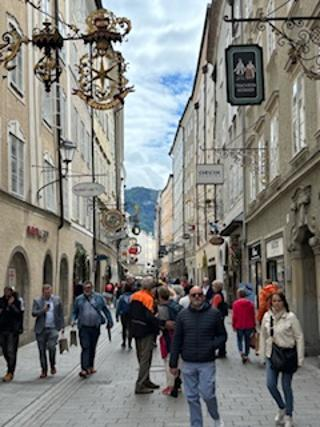
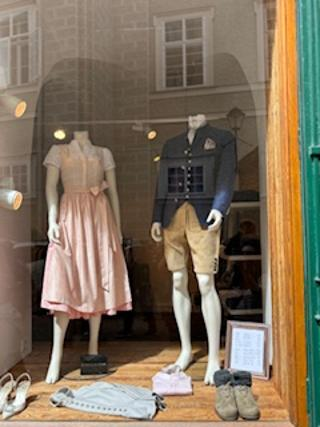
We learned that it is not uncommon for a pair of lederhosen, the traditional men’s leather shorts you see on the manikin, to cost more than $1,000. But people will pay it because they are made to last. One of our earlier guides was wearing his dad’s lederhosen, and his dad would wear his grandfather’s. If you look closely at the woman’s dress on the female manikin, you’ll see a bow tied to the dress’s left. Tradition says if the bow is tied on the right, the woman is single; tied on the left, she is married; tied in the middle? It’s up for discussion. There are lots of clubs in Austria and Bavaria and every club has their own uniform based on this type of traditional dress that they wear on special occasions and in holiday parades.
On the way to St. Peter’s Monastery, we passed by this lion representing Austria’s strength in trade with Venice, and Mozart’s Concert Hall. The Hall was originally built as a stable for the archbishop’s horses. There was an organ in the area above the door and every time the horses came out the organ played. Today it is just what its name suggests – a concert hall.
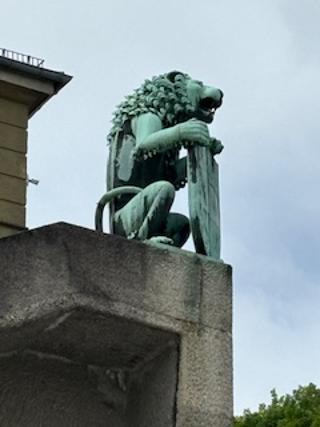
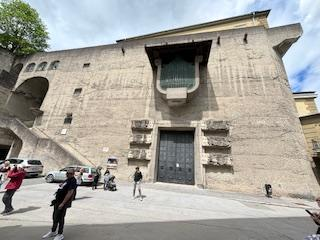
We walked around the grounds of St. Peter’s Monastery.
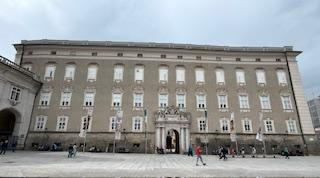
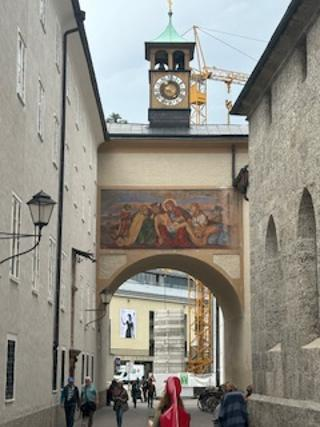
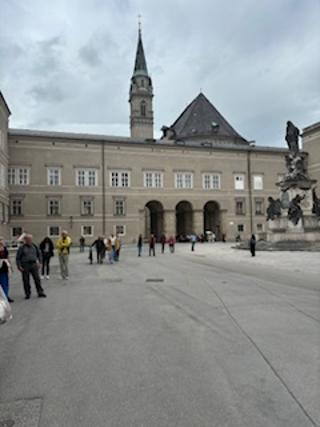
Then St. Peter’s Cathedral before having time on our own.
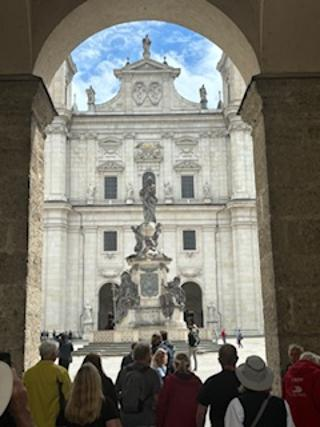
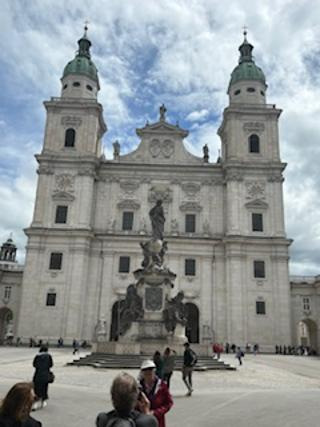
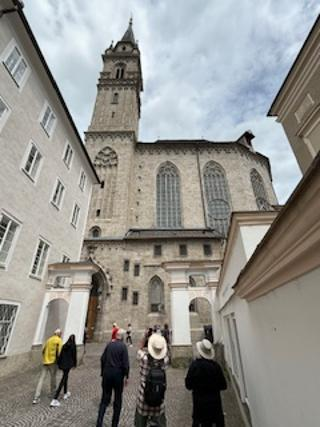
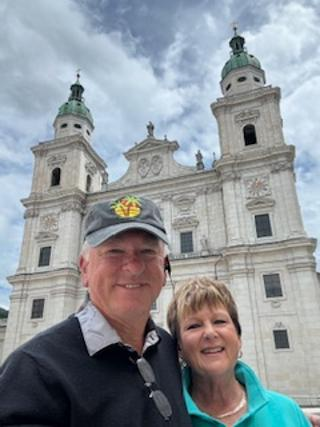
During our free time we snagged some “original” Mozart Balls, a local speciality invented in 1703, then visited the cemetery of St. Peter’s. It’s very unique. Stones we could read dated as far back as the 1700s and as recent as 2022, but there were many stones too worn to read that we’re sure dated much further back.
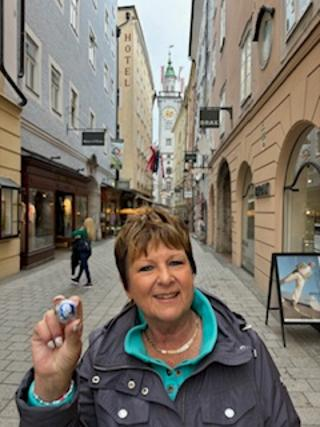


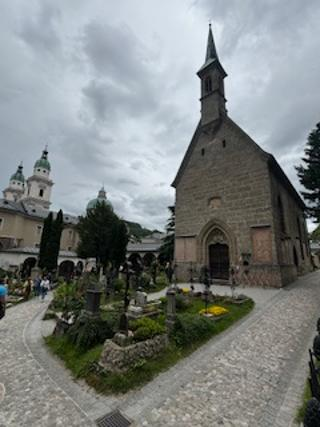


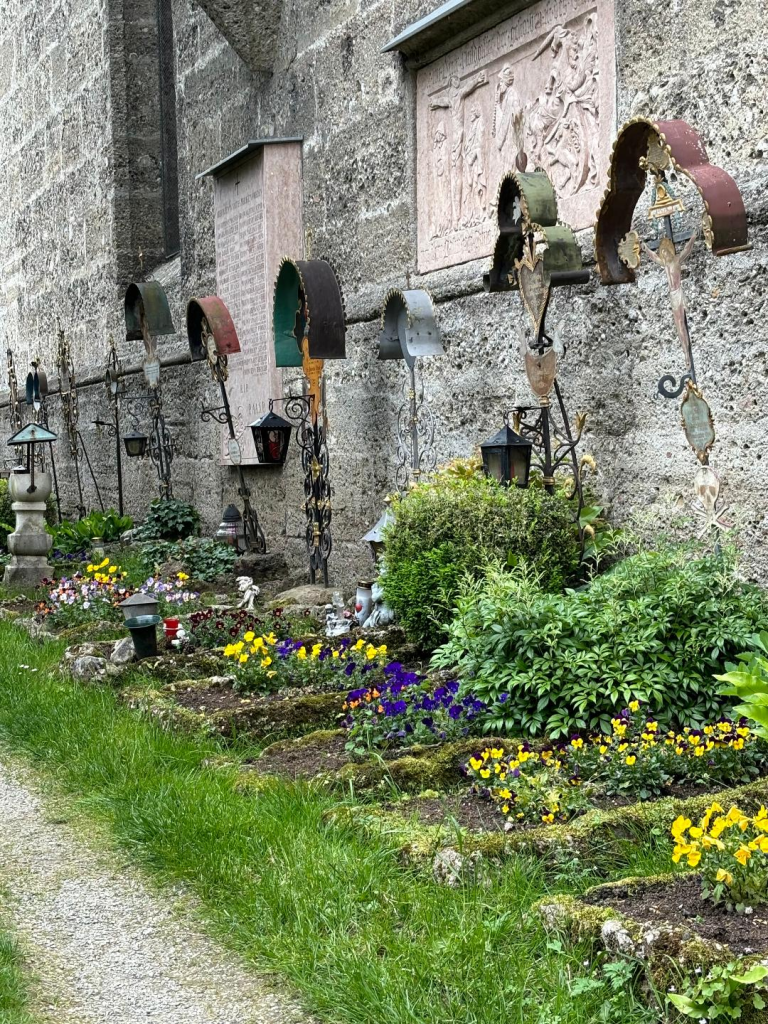

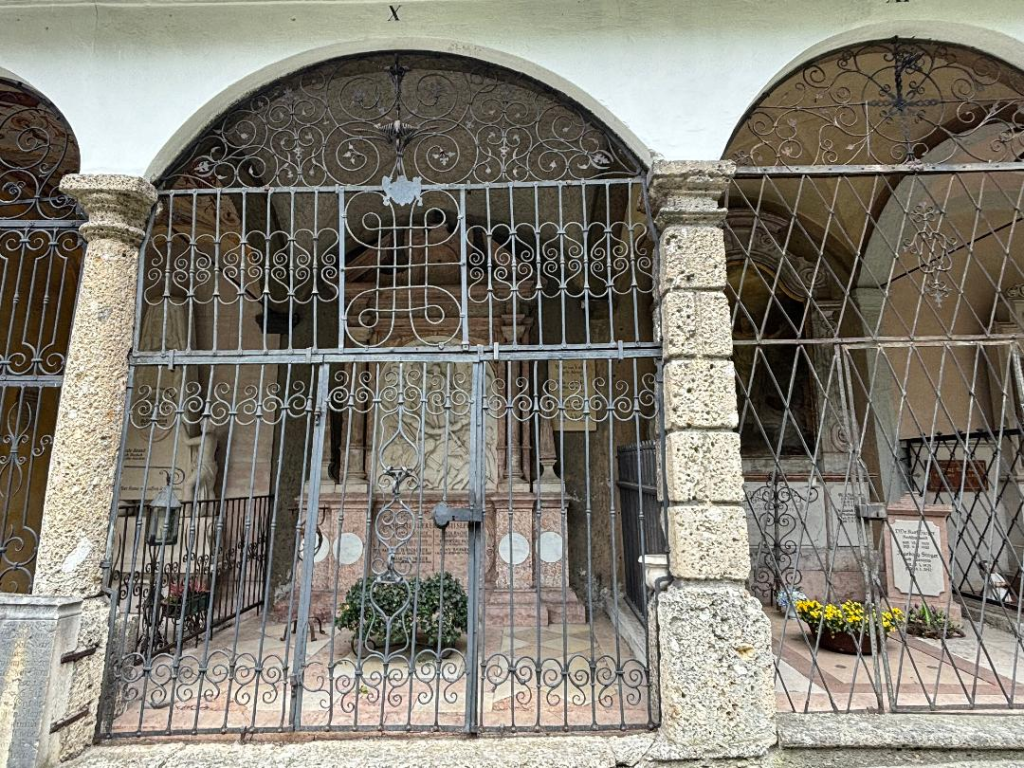
And, of course, here’s Ken doing what Ken does…
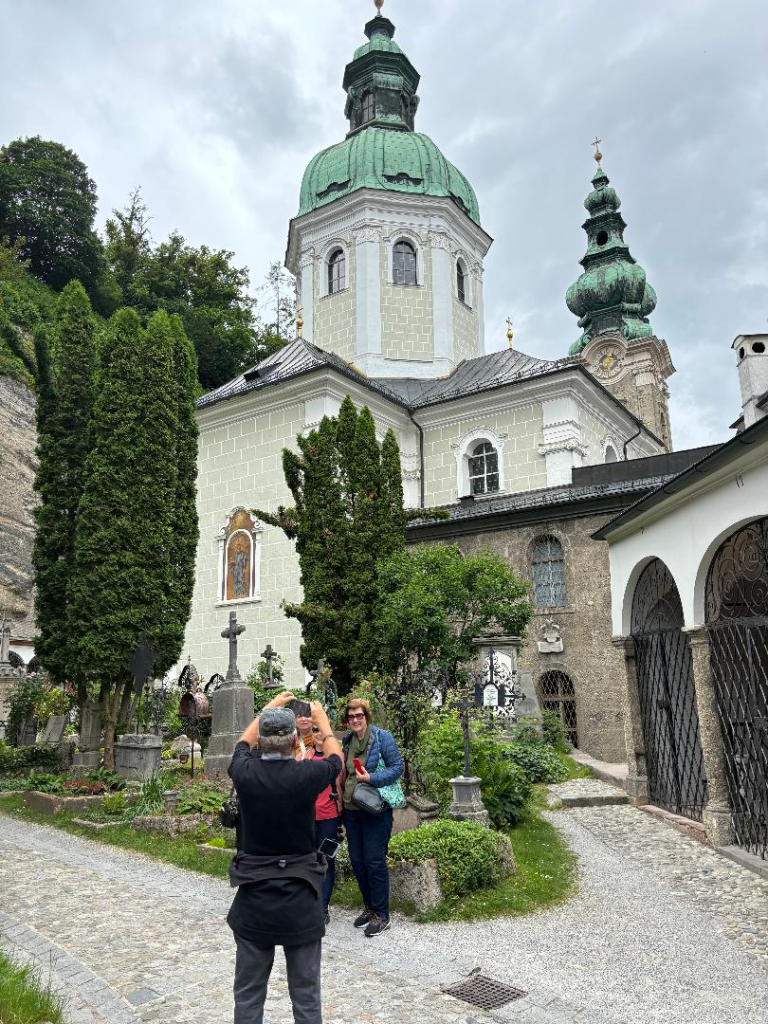
We finished the day with dinner in the oldest restaurant in Europe, St. Peter Stiftskulinarium, built in 803. We were treated to a traditional Austrian meal of roasted chicken, polenta and root vegetables, and a desert that consisted of three giant dollops of toasted meringue with a very bitter berry compote on the bottom. During our meal we were serenaded with music from the Sound of Music by a small opera company with beautiful voices taking on the characters of the movie. We were less impressed with the food than we were the building. It has a variety of private meeting rooms with differing themes. Two are actually built directly into the mountain and one small one even has a dog bed in it!


